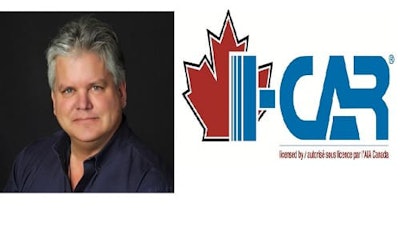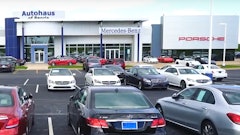
Toronto, Ontario — July 26, 2019
By Andrew Shepherd
Industry long-timers will remember the 25-year history of I-CAR training in Canada before 2009, a period in which the program was run from Chicago with local managers. By all accounts, this was a roller-coaster period of variable product quality and increasingly outdated administrative systems, matched with incredibly dedicated instructors and volunteers. The situation became so dire that I-CAR U.S. announced it was withdrawing from the northern market and looking for a Canadian partner to take over.
At this point several members of AIA Canada’s PBE Council, as it was known then, recommended strongly that the national association step forward to license the program for delivery in Canada.
The past decade of program history can be captured in the idea of the “Canadianization” of I-CAR training. The first step was to recognize one of the foundational differences between Canada and the U.S., which was the existence of a very effective apprenticeship system in every province. This led to the granting of equivalent credits so that technicians would not have to duplicate training. This, in turn, allowed Canada to lead the U.S. in establishing the highest Gold and Platinum recognition standards, a level the U.S. is only now reaching.
Partnerships with public insurers (in particular Manitoba Public Insurance), the provision of large-scale data feeds to major repair networks, a commitment to French language delivery and customized shop consulting are also among the I-CAR Canada innovations of the past 10 years.
For better or worse, the future is likely to see a move away from local customization of the program, for a number of reasons. Canada’s major repair networks and suppliers are becoming integrated across borders and looking for a more consistent training and recognition program. Automakers are adopting global platforms and pushing I-CAR to provide similar approaches around the world. In turn, I-CAR U.S. is actively pursuing delivery arrangements in all major global markets with a promise of ‘one solution fits all’.
For Canada, this will mean a more rigid adherence to global program rules. The recent launch of an entirely revamped course curriculum and the ‘raising of the bar’ for Platinum technician standards is a good example. Certainly, these moves are in step with increasingly complex repair procedures, but there is little room to accommodate the pressures smaller and rural shops in particular face from this heightened demand for investment in training. Similarly, I-CAR’s global program limits any Canadian approach to course pricing flexibility.
The future of I-CAR Canada will continue to require a fine balancing act, matching domestic realities such as apprenticeship training, language, and geography with the globalization of the collision repair industry. Like the collision repair industry itself, change will be the only constant






















